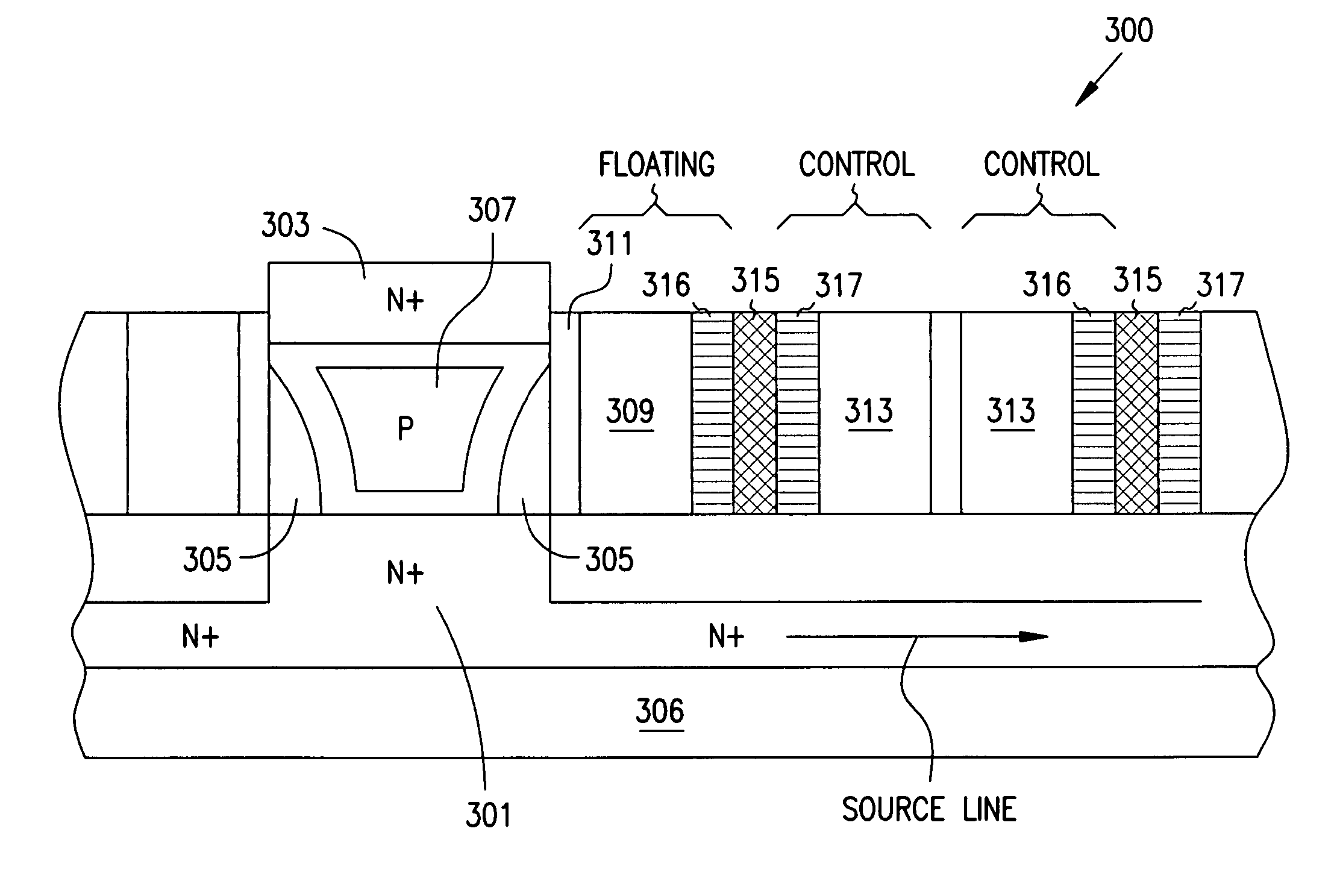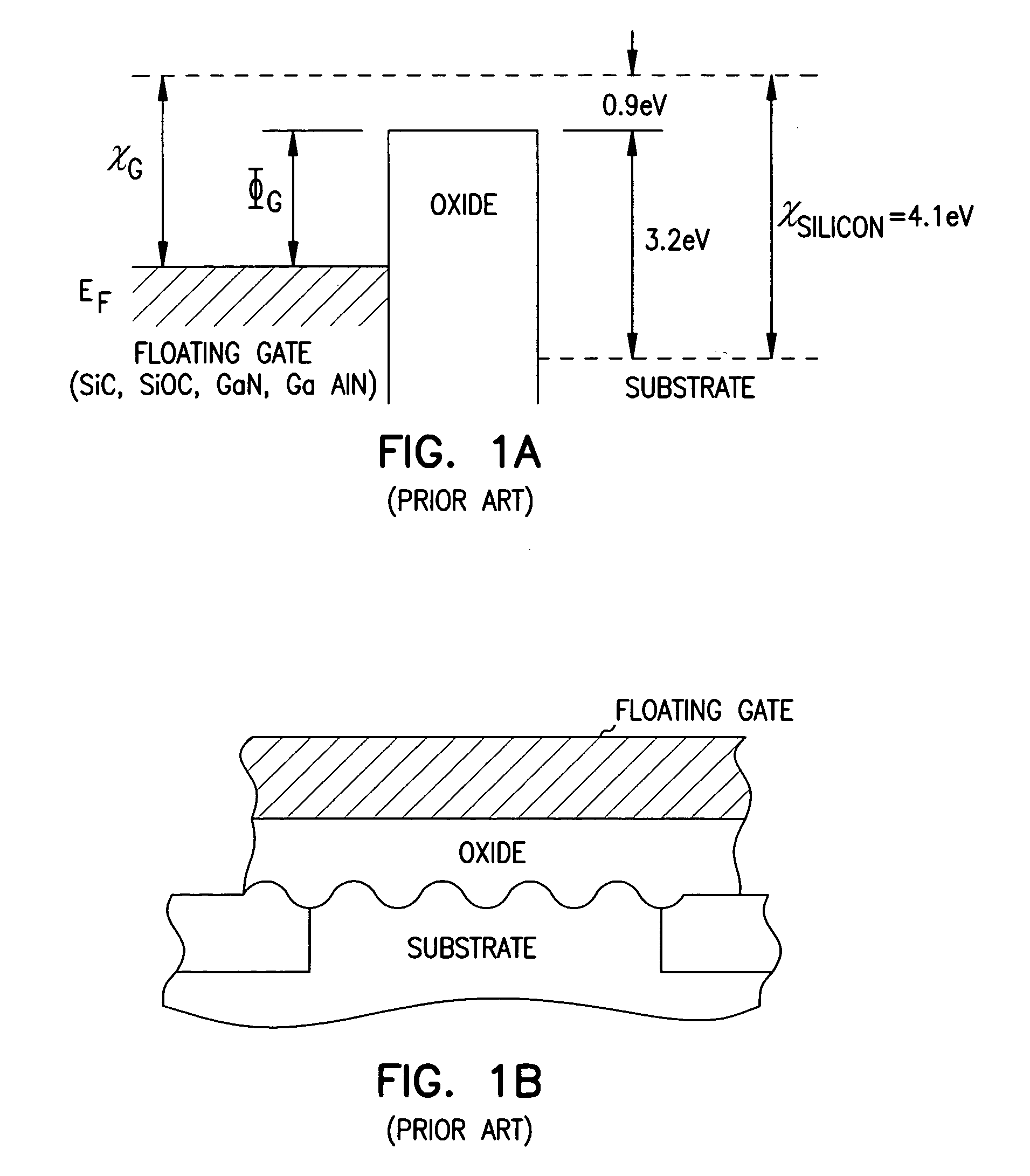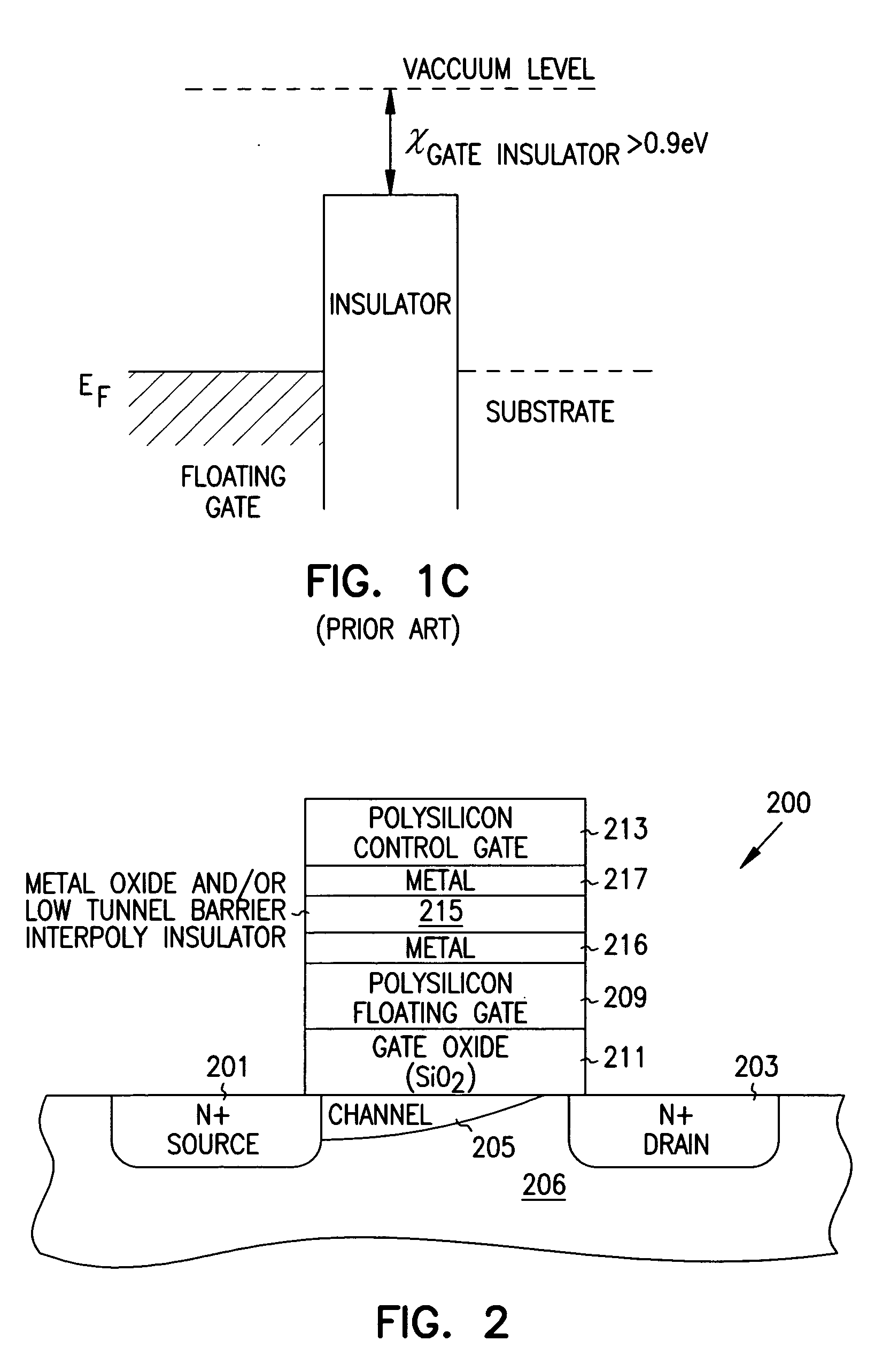Programmable array logic or memory devices with asymmetrical tunnel barriers
a technology of asymmetric tunnel barriers and programmable arrays, applied in semiconductor devices, transistors, instruments, etc., can solve problems such as premature breakdown and reliability problems, poor quality interpoly oxides, and localized high electric fields
- Summary
- Abstract
- Description
- Claims
- Application Information
AI Technical Summary
Benefits of technology
Problems solved by technology
Method used
Image
Examples
example i
Formation of Al2O3 Tunnel Barriers
As stated above, the conventional large barrier insulating dielectrics are silicon oxide and silicon nitride. (See generally, T. P. Ma et al., “Tunneling leakage current in ultra-thin (<4 nm) nitride / oxide stack dielectrics,” IEEE Electron Device Letters, vol. 19, no. 10, pp. 388-390, 1998). The realities are that silicon oxide is not an optimum choice for memory type devices, because the 3.2 eV tunnel barrier is too high resulting in premature failure of the insulators and limiting the number of operational cycles to be in the order of 105 to 107.
According to one embodiment of the present invention, an asymmetrical low tunneling barrier interpoly insulator is used instead, such as Al2O3 with a tunneling barrier of approximately 2.0 eV. A number of studies have dealt with electron tunneling in Al / Al2O3 / Al structures where the oxide was grown by “low temperature oxidation” in either molecular or plasma oxygen. (See generally, S. M. Sze, Phys...
example ii
Formation of Single- and Multi-Layer Transition Metal Oxide Tunnel Barriers
The band gap energies and barrier heights of some conventional gate insulators as silicon oxide, silicon nitride and aluminum oxide as well as tantalum oxide have been investigated and described in detail (see generally, H. Itokawa et al., “Determination of bandgap and energy band alignment for high-dielectric-constant gate insulators using high-resolution x-ray photoelectron spectroscopy,” Ext. Abstracts Int. Conf. On Solid State Devices and Materials, pp. 158-159, 1999). Formation of single and double-layer dielectric layers of oxides of Ta2O5 and similar transition metal oxides can be accomplished by thermal as well as plasma oxidation of films of these metals. (See generally, H.F. Luan, et al., “High quality Ta2O5 gate dielectrics with Tox eq<10 Å,” International Electron Devices Meeting Technical digest, p. 141-144, 1999; J. Robertson and C. W. Chen, “Schottky barrier heights of tantalum oxide, ba...
example iii
Formation of Alternate Metal Compound Tunnel Barriers
Although no applications may be immediately obvious, it is conceivable that one might want to form a stack of asymmetrical oxide films having quite different properties, for example, a stack comprised of a high dielectric constant (k) oxide / a low k oxide / a high k oxide. “Low temperature oxidation” can be used to form numerous variations of such structures. While most of this disclosure deals with the formation and use of stacks of asymmetrical oxide dielectrics, it is also possible to use “low temperature oxidation” to form other thin film dielectrics such as nitrides, oxynitrides, etc. that could provide additional functions such as being altered by monochromatic light, etc. These will not be discussed further here.
PUM
 Login to View More
Login to View More Abstract
Description
Claims
Application Information
 Login to View More
Login to View More - R&D
- Intellectual Property
- Life Sciences
- Materials
- Tech Scout
- Unparalleled Data Quality
- Higher Quality Content
- 60% Fewer Hallucinations
Browse by: Latest US Patents, China's latest patents, Technical Efficacy Thesaurus, Application Domain, Technology Topic, Popular Technical Reports.
© 2025 PatSnap. All rights reserved.Legal|Privacy policy|Modern Slavery Act Transparency Statement|Sitemap|About US| Contact US: help@patsnap.com



